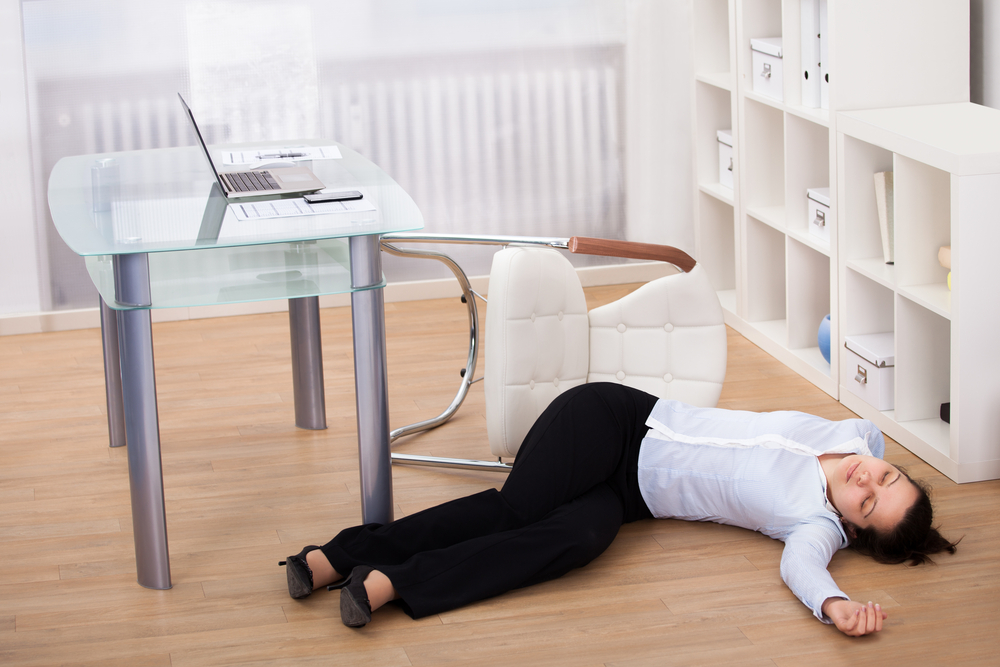A CBS Los Angeles meteorologist who fainted during a live broadcast last weekend revealed what caused the dramatic on-air collapse.
Alissa Carlson Schwartz, who was hospitalized with a head injury after the fall, was reportedly told by the doctors she suffers from vasovagal syncope.
Vasovagal syncope or neurocardiogenic syncope is a condition that occurs when your body overreacts to certain triggers, such as the sight of blood or extreme emotional distress, causing you to faint. When the trigger strikes, the heart rate and blood pressure drop, reducing the blood flow to your brain, which results in loss of consciousness.
“I do have a history of fainting. It’s just when you’re on a public platform, sometimes it happens and people now see this,” Schwartz said after she recovered from the injuries, as reported by the New York Post.
“It wasn’t really until 15 minutes prior to the incident that I started to feel little nausea,” Schwartz recounted.
Schwartz said she did not eat her breakfast that morning and was a little dehydrated.
These are the common triggers for vasovagal syncope, also known as reflex syncope.
- Standing for extended periods
- Excess heat or exhaustion
- Intense pain or emotion
- The sight of needles or medical instrument
- Prolonged exercise
- Dehydration or skipping meals
It is estimated that one out of three people may experience vasovagal syncope at least once in their life. The condition can occur in people of all age groups. Studies show that around 85% of fainting instances in people under 40 and 50% in older adults are caused by vasovagal syncope.
However, people with Parkinson’s disease are unlikely to experience vasovagal syncope as their condition disrupts the normal functioning of their nervous system.
Vasovagal syncope usually happens when you are standing or sitting. It is very unlikely to get the condition while lying down.
How can you prevent the fall?
A brief period before which the condition strikes is called a prodrome. Around 30 to 60 seconds before the attack, you might experience symptoms like dizziness, a sudden “wave of heat” or warm feeling on your body, pale skin, yawning, sweating, and a sudden feeling of tiredness.
If you can recognize the symptoms of prodrome, you can reduce the injuries from the fall. However, the prodrome is less common in older adults.
Techniques to prevent the attack
People with vasovagal syncope can control its impact on their lives if they manage to recognize the symptoms of an attack.
Here are simple techniques to keep the blood pressure high that might help you stop the attack:
- Squeeze a foam or rubber ball
- Clench your fist
- Tense your arms as if you are holding something. Hook your curled hands together and try to pull them apart after they are in a good grip.
- Cross your legs while standing. This technique is helpful if you identify the symptoms of the attack but cannot find a place to sit. While keeping your balance, you can cross your legs with one knee behind the other and then tense up the muscles in your legs, belly, and buttocks. This technique will keep blood higher up in your body and can help prevent you from passing out.
How serious is the condition?
Although the condition is harmless, the fall may cause injury. People who suffered an attack are recommended to seek medical help if they happen to hit their heads during the fall. Those who are on blood-thinning medications need immediate attention, as they are at a much higher risk for internal bleeding.
Many serious or life-threatening conditions can also cause a person to pass out. So, if you have a history of falling unconscious, it is important to understand what caused the episode.
Although most people recover from the condition without any treatment, some might require IV fluids if dehydrated or medications for blood pressure and regulating heartbeat.
















